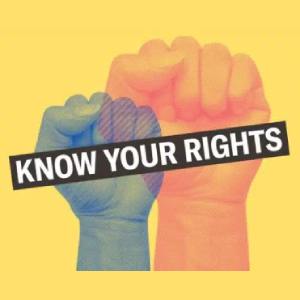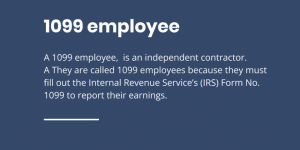Updated September 22, 2025
Workplace Discrimination: New Research on Mental Health Impact
Workplace discrimination silently undermines mental health in the workplace, creating psychological burdens that extend far beyond the immediate incident. Despite decades of legal protections, discrimination remains a persistent problem affecting millions of workers nationwide. Recent research reveals that employees who experience discrimination are significantly more likely to develop depression, anxiety, and stress-related conditions compared to their colleagues.
Indeed, the psychological impact of workplace discrimination can be as damaging as more commonly recognized workplace stressors. According to research from a multi-ethnic hospital worker study, 14% of employees reported experiencing discrimination, with those frequently targeted showing markedly higher scores on depression scales. Furthermore, this impact appears consistent across racial and ethnic groups, challenging previous assumptions about discrimination experiences.
This article examines groundbreaking findings on how discrimination functions as a distinct psychosocial stressor, its measurable effects on employee mental wellbeing, and what these discoveries mean for creating truly inclusive workplace environments that protect all workers' psychological health.
Prevalence of Workplace Discrimination Across Demographics
Discrimination persists as a widespread problem in American workplaces, affecting employees across various demographic groups in distinct ways. Data reveals both the scope and pattern of discriminatory practices that eventually contribute to mental health challenges at work.
Race/Ethnicity-Based Disparities in Reported Discrimination
Racial disparities in workplace discrimination remain stark and measurable. Black and Hispanic workers report discrimination at identical rates of 24%, substantially higher than the 15% reported by White employees [1]. Overall, Black workers experience a 60% higher prevalence of discrimination compared to their White counterparts [1]. The disparity becomes even more pronounced when examining specific employment practices, with 41% of Black workers reporting discrimination in hiring, pay, or promotions—a rate dramatically higher than among Asian (25%), Hispanic (20%), and White workers (8%) [1].
For those who do experience discrimination, the nature of that discrimination varies by race. Among Black workers who reported workplace discrimination, 75% identified race as the basis for that treatment [1]. Moreover, the prevalence of racial discrimination was seven times higher for Blacks than Whites [1]. This disparity extends beyond individual experiences to perceptions of opportunity, with 51% of Black workers believing their race makes success at work harder to achieve [1].
Native Americans face particularly severe discrimination in certain contexts, with those living in majority Native areas being more than twice as likely (54%) to report hiring and compensation discrimination compared to those in non-majority Native areas (22%) [1].
Gender, Age, and Disability as Discrimination Triggers
Gender-based discrimination shows similarly troubling patterns. Women report a 53% higher prevalence of discrimination compared to men [1]. Additionally, 31% of women indicate they have been discriminated against when applying for jobs specifically because of their gender [1]. This gender gap extends to workplace mistreatment, with women experiencing a 52% higher prevalence than men [1]. The intersection of race and gender creates compounded vulnerabilities—Black women report the highest discrimination rate (25%) while White men report the lowest (11%) [1].
Age represents another critical factor in discrimination patterns. Black workers under 40 are almost twice as likely (31%) to report workplace discrimination compared to those 40 and older (17%) [1]. A nearly identical pattern appears among Hispanic workers, with 31% of younger employees reporting discrimination versus 17% of those over 40 [1].
Disability and weight-related discrimination create additional burdens. Individuals with disabilities face stereotyping as incompetent, while higher-weight individuals encounter pervasive stigmatization associated with negative health and professional outcomes [2]. Notably, while disability discrimination is prohibited under federal law, there is no federal protection against weight-based discrimination [2].
Underreporting and the Minimization Hypothesis
Despite these high rates, evidence suggests workplace discrimination remains significantly underreported. Fear of retaliation stands as the primary reason employees hesitate to report discriminatory treatment [3]. These fears intensify when alternative employment options are limited, such as during periods of high unemployment [3].
When discrimination is reported, victims often encounter what researchers term "social pain minimization" (SPM)—the invalidation of their experiences when colleagues discount or ignore the emotional harm caused [2]. This minimization becomes particularly problematic in male-dominated environments, where "female employees become increasingly reluctant to report despite an increase in [case] volume" [3].
The minimization hypothesis suggests that when labor market conditions worsen, underreporting increases, with only the most severe cases being reported [3]. This creates a cyclical pattern where discrimination appears less prevalent precisely when it may be most harmful to mental health and job security.
Measurement of Discrimination and Mental Health Outcomes
Researchers utilize several validated instruments to quantify both workplace discrimination experiences and their mental health consequences. These measurement tools allow for a standardized approach to examining the relationship between discriminatory treatment and psychological outcomes.
Self-Reported Discrimination: Frequency and Type Metrics
Measuring workplace discrimination primarily relies on self-reported experiences, captured through structured scales that assess both frequency and type. The Experiences of Discrimination (EOD) measure developed by Krieger has been extensively validated across racial/ethnic groups [4]. This instrument examines discrimination across multiple domains including medical care, school, work, and public spaces [5].
Another widely used tool is Williams' 6-item scale, which measures frequency of discriminatory experiences at work over a 12-month period. This scale asks questions such as "How often are you unfairly given tasks at work that no one else wants?" with responses ranging from "never" to "almost every day" [6]. Due to the relatively low frequency of reported incidents in some studies, researchers often collapse responses into categorical variables such as "never," "infrequently," "occasionally," and "frequently" experienced discrimination [6].
In multi-ethnic workplace studies, discrimination measures typically include attribution questions to identify perceived bases of mistreatment (race, gender, age, etc.). In one study of female employees, 32.2% reported experiencing at least one aspect of workplace gender discrimination [7]. Likewise, a prospective study found that 4.8% of participants reported workplace discrimination during the previous 12 months [8].
CES-D Scale for Depressive Symptoms
The Center for Epidemiologic Studies Depression Scale (CES-D) stands as the gold standard for measuring depressive symptoms in workplace discrimination research. This 20-item self-report scale asks respondents to rate the frequency of various symptoms over the past week, with responses ranging from "rarely or none of the time" to "most or all of the time" [9].
The CES-D has been validated across diverse racial/ethnic groups with consistent reliability (Cronbach's alpha typically around 0.85) [1]. Although some CES-D items like "People were unfriendly" might overlap with discrimination experiences, studies removing these potentially confounding items still find significant associations between discrimination and depressive symptoms [10].
In a multi-ethnic hospital worker study, those reporting discriminatory experiences were approximately five times more likely to report moderate or severe depressive symptoms than those who did not [11]. Likewise, in a prospective study, 15.5% of workers exposed to discrimination developed depressive disorders during follow-up, compared to only 4.3% of unexposed workers [8].
Job Strain Assessment via Job Content Questionnaire
The Job Content Questionnaire (JCQ) provides a standardized method for evaluating workplace stress through the lens of job demands and control. The 14-item version commonly used in discrimination studies includes five questions on psychological demands and nine on job control [1].
Researchers typically dichotomize "demands" and "control" scales at their medians, classifying those experiencing high demands and low control as having "high job strain" [1]. The JCQ demonstrates good concurrent, predictive, and discriminant validity across populations, with internal consistency (Cronbach's alpha) typically around 0.77 [1].
General Social Stress via Perceived Stress Scale
The Perceived Stress Scale (PSS) measures individuals' appraisals of global stressors rather than responses to specific events. Both 4-item and 10-item versions are used in workplace discrimination research [1].
The 4-item PSS asks questions like "In the past month, have you felt that you were unable to control the important things in your life?" with responses ranging from "never" to "very often" [1]. The 10-item version follows a similar format but provides more comprehensive assessment, with scores ranging from 0 to 40 and higher scores indicating greater perceived stress [12].
The PSS has demonstrated good validity and reliability across diverse populations, including psychiatric and non-psychiatric samples [1]. In studies examining the mediating role between workplace discrimination and psychological well-being, perceived stress consistently emerges as a significant pathway through which discrimination affects mental health [13].
Statistical Findings from Multi-Ethnic Hospital Worker Study
The multi-ethnic hospital worker study revealed compelling statistical evidence about discrimination's psychological impact on employees. These findings illuminate both the prevalence and mental health consequences of workplace mistreatment across demographic groups.
14% Reported Discrimination: Breakdown by Group
Data from the hospital worker study demonstrated that 14% of participants reported experiencing workplace discrimination in the previous year [1]. Interestingly, these reports did not differ by case status, sex, age, education, occupation, or country of birth [1]. However, clear racial disparities emerged in both frequency and attribution of these experiences.
African Americans consistently reported higher rates of discrimination compared to other racial/ethnic groups [1]. They were also substantially more likely to experience multiple types of discrimination and to categorize these experiences as occurring "sometimes" [1]. Among those reporting workplace discrimination, 57% attributed these events to race/ethnicity, with a much higher percentage of African Americans noting this type of discrimination compared to other groups [1].
Regarding discrimination types, both Asian Pacific Islanders and African Americans reported higher rates of nationality-based discrimination [1]. In contrast, no racial or ethnic differences were found in discrimination related to hiring, evaluation, work assignments, or promotion [1]. Nevertheless, African Americans more frequently reported experiencing discrimination in day-to-day workplace interactions [1].
Higher CES-D Scores Among 'Often' Discriminated Employees
All three measures of workplace discrimination showed positive, statistically significant associations with higher mean CES-D scores (indicating more depressive symptoms) [1]. Further analysis revealed this association was primarily driven by differences in mean CES-D scores between individuals in the lowest (none/never) and highest (multiple/often) discrimination groups [1].
In adjusted statistical models, the positive association between workplace discrimination frequency and depressive symptoms was strongest and most consistent for individuals who experienced discrimination "often" [1]. However, researchers found no significant association between the number of discrimination types and depressive symptoms [1].
No Significant Interaction Between Race and Mental Health Impact
Perhaps the most unexpected finding was the absence of racial/ethnic differences in the relationship between workplace discrimination and mean CES-D scores [1]. Statistical tests for interactions between race/ethnicity and workplace discrimination consistently proved non-significant [1].
Consequently, researchers found no support for the hypothesis that the association between workplace discrimination and depressive symptoms would be more pronounced among racial or ethnic minorities [1]. This suggests that regardless of an employee's background, discrimination impacts mental health through similar psychological mechanisms—an important consideration for workplace mental health programs that must address discrimination's universal psychological harm.
Discrimination as a Distinct Psychosocial Stressor
Research findings distinguish workplace discrimination as a unique psychological burden, separate from other work-related stressors that impact mental health in the workplace.
Comparison with Job Strain and General Stress
Unlike general workplace stress or job strain (characterized by high demands and low control), discrimination operates through distinct psychological mechanisms. Studies confirm that workplace discrimination occurrence, types, and frequency are associated with depressive symptomatology above and beyond job strain and general social stress [1]. This uniqueness persists across varied occupations and demographic groups. In essence, the psychological harm from being treated unfairly based on personal characteristics differs fundamentally from stress caused by workload or performance expectations.
Biologically, discrimination triggers distinct physiological responses. The body undergoes high arousal when encountering discriminatory experiences, activating the cardiovascular system [14]. With chronic exposure, high discrimination levels lead to increased cardiovascular susceptibility because of continued stress reactions, culminating in reduced capacity for recovery and elevated allostatic load [14].
Multivariate Regression Models: Adjusted R² Insights
Multivariate analyzes reveal that workplace discrimination maintains a significant effect on mental health even after controlling for sociodemographic factors, general stress, and job strain [1]. Though discrimination accounts for an additional 1% of variance in depressive symptoms beyond controls and race [1], this seemingly small effect proves meaningful because it persists under rigorous statistical control—essentially, discrimination's impact endures even when accounting for all other major workplace stressors.
Cumulative Exposure and Microaggressions
The psychological burden intensifies through repeated experiences. Individuals reporting discrimination at multiple timepoints were 46% more likely to report probable mental health problems than those reporting a single timepoint [15]. Furthermore, those exposed to racial discrimination at both time points showed a 5.78-point reduction in mental health scores compared to those with no exposure [16].
Microaggressions—subtle discriminatory behaviors—similarly erode mental wellbeing. Among female physicians, 84.6% reported experiencing microaggressions, associated with changes in work behavior and impostor syndrome [3]. Subtle insults create a toxic accumulative effect, with 38% of peer support specialists reporting frequent mental health-related microaggressions that led to isolation and job abandonment [3].
Implications for Workplace Mental Health Policy
Implementing effective workplace mental health policies requires addressing discrimination as a fundamental organizational responsibility. Evidence-based approaches can mitigate the psychological harm caused by discriminatory practices through targeted interventions.
Need for Longitudinal and Microaggression-Focused Research
Longitudinal studies demonstrate that high levels of workplace discrimination remain associated with increased psychological distress even nine years later [17]. In fact, the psychological impact persists after adjusting for demographic factors, socioeconomic status, and health behaviors [18]. Beyond individual incidents, microaggressions create an accumulative toxic effect, with 38% of affected workers reporting isolation that led to job abandonment [19]. Future research must explore effective organizational interventions across various occupational settings to address both overt discrimination and subtle everyday slights [20].
Importance of Anti-Discrimination Training and Reporting Systems
Traditional discrimination reporting processes often fail, with half of all complaints resulting in retaliation [21]. As a result, alternative systems like ombuds offices and transformative mediation have proven more effective at resolving discrimination complaints [21]. The most successful anti-bias training programs educate participants on bias, encourage counterstereotypic thinking, and provide practical daily strategies [22]. In response to these findings, organizations should implement discrimination tracking systems to identify patterns and develop targeted action plans [23].
Mental Health Support Integration in High-Strain Jobs
WHO recommends manager training for mental health that builds interpersonal skills and fosters understanding of how job stressors affect psychological wellbeing [2]. Granted that positive, supportive workplaces buffer mental distress, employers should improve conditions through adequate staffing, helpful supervision, and harassment prevention [24]. For maximum effectiveness, mental health support must include reasonable accommodations, return-to-work programs, and continued vocational support for employees with severe mental health conditions [2].
Conclusion
Workplace discrimination clearly stands as a significant threat to employee mental health, regardless of demographic background. Research findings demonstrate that discrimination functions as a distinct psychosocial stressor with measurable negative impacts on psychological wellbeing. The evidence shows that employees who frequently experience discrimination exhibit markedly higher depression scores compared to their colleagues.
Perhaps surprisingly, the psychological harm caused by discriminatory treatment appears consistent across racial and ethnic groups. This challenges previous assumptions about discrimination experiences and suggests universal psychological mechanisms through which unfair treatment damages mental health. Additionally, the cumulative effect of repeated exposure and microaggressions creates lasting psychological burdens that extend far beyond individual incidents.
Organizations must therefore acknowledge discrimination as a serious workplace hazard rather than merely a legal compliance issue. Effective solutions require comprehensive approaches including improved reporting systems that prevent retaliation, evidence-based anti-bias training programs, and integrated mental health support services. Companies should also implement discrimination tracking systems to identify patterns and develop targeted interventions.
The business case for addressing workplace discrimination extends beyond legal protection. Companies that create truly inclusive environments where all employees feel valued will likely see benefits through improved psychological wellbeing, reduced turnover, and enhanced productivity. Most importantly, every worker deserves dignity and respect regardless of their personal characteristics.
Though significant progress has been made through legal protections, this research underscores that discrimination remains a persistent problem affecting millions of workers nationwide. Only through continued research, organizational commitment, and cultural change can workplaces become genuinely inclusive environments that protect all employees' psychological health.
References
[1] – https://pmc.ncbi.nlm.nih.gov/articles/PMC2867471/
[2] – https://www.who.int/news-room/fact-sheets/detail/mental-health-at-work
[3] – https://www.healthline.com/health/microaggressions-in-the-workplace
[4] – https://www.sciencedirect.com/science/article/pii/S0277953605000973
[5] – https://pmc.ncbi.nlm.nih.gov/articles/PMC3474598/
[6] – https://pmc.ncbi.nlm.nih.gov/articles/PMC3215400/
[7] – https://www.sciencedirect.com/science/article/abs/pii/S0022395624007416
[8] – https://www.sciencedirect.com/science/article/pii/S0165032722010400
[9] – https://pdxscholar.library.pdx.edu/cgi/viewcontent.cgi?article=1329&context=busadmin_fac
[10] – https://pmc.ncbi.nlm.nih.gov/articles/PMC5555118/
[11] – https://www.researchgate.net/publication/44593383_Workplace_Discrimination_and_Depressive_Symptoms_A_Study_of_Multi-Ethnic_Hospital_Employees
[12] – https://bmcpublichealth.biomedcentral.com/articles/10.1186/s12889-021-10594-2
[13] – https://www.researchgate.net/publication/394526227_IMPACT_OF_WORKPLACE_DISCRIMINATION_ON_PSYCHOLOGICAL_WELL-BEING_AMONG_TEACHERS_MEDIATING_ROLE_OF_PERCEIVED_STRESS
[14] – https://www.ahajournals.org/doi/10.1161/JAHA.122.027374
[15] – https://www.sciencedirect.com/science/article/pii/S0165032724016173
[16] – https://pmc.ncbi.nlm.nih.gov/articles/PMC4984732/
[17] – https://pubmed.ncbi.nlm.nih.gov/38942613/
[18] – https://stacks.cdc.gov/view/cdc/208180
[19] – https://rex.libraries.wsu.edu/esploro/outputs/doctoral/Workplace-Discrimination-and-Health-A-Longitudinal/99900581414001842
[20] – https://midus.wisc.edu/findings/pdfs/2883.pdf
[21] – https://www.shrm.org/topics-tools/news/employee-relations/alternative-complaint-systems-harassment-discrimination-disputes
[22] – https://www.fjc.gov/content/337738/effectiveness-implicit-bias-trainings
[23] – https://hrmanual.calhr.ca.gov/Home/ManualItem/1/1010
[24] – https://www.cdc.gov/vitalsigns/health-worker-mental-health/index.html
Why Choose Setyan Law, APC?
Consulting a workplace discrimination attorney will provide you with the necessary guidance and support to navigate the legal process effectively. Remember, time is of the essence, so seek legal advice promptly to maximize your chances of a successful outcome.
Call Setyan Law at (213)-618-3655 for a consultation.








